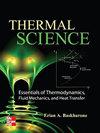Numerical investigation on cooling rate in proton exchange membrane fuel cell using propylene glycol fluid
IF 1.1
4区 工程技术
Q4 THERMODYNAMICS
引用次数: 0
Abstract
In this study, a cooling channel was constructed inside the fuel cell to examine the impact of cooling on proton exchange membrane (PEM) fuel cell performance. The performance of the fuel cell was assessed using four different coolant mixtures: DI100 (100 percent Deionized water), PG10 (90 percent DI water + 10% Propylene Glycol), PG20 (80 percent DI Water + 20% Propylene Glycol), and PG30 (70 percent DI Water + 30% Propylene Glycol). The efficiency of the fuel cell, system temperature, operating parameters, coolant, and cooling channel shape of the fuel cell were tested using a computational fluid dynamics model based on the finite volume approach. The test results showed that the fuel cell performance was good for both single-cell fuel cells and fuel cell stacks at temperatures of 354 k and 360 k, respectively. However, as the membrane became dehydrated above 362 k for single cell fuel cells and after 371 k for fuel cell stacks, performance of the fuel cell decreased and no appreciable improvement was seen. For single cells, the fuel cell showed good performance improvement at PG30 combinations, whereas the best performance in stacks was attained at PG20 combinations.丙二醇流体对质子交换膜燃料电池冷却速率的数值研究
本研究在燃料电池内部构建了一个冷却通道,以研究冷却对质子交换膜(PEM)燃料电池性能的影响。使用四种不同的冷却剂混合物来评估燃料电池的性能:DI100(100%去离子水),PG10(90%去离子水+ 10%丙二醇),PG20(80%去离子水+ 20%丙二醇)和PG30(70%去离子水+ 30%丙二醇)。采用基于有限体积法的计算流体动力学模型,对燃料电池的效率、系统温度、工作参数、冷却剂和冷却通道形状进行了测试。测试结果表明,在354k和360k温度下,单电池和燃料电池堆的性能都很好。然而,当膜在362k以上脱水时(单电池燃料电池),在371k后(燃料电池堆),燃料电池的性能下降,没有明显的改善。对于单个电池,在PG30组合下,燃料电池的性能得到了很好的提高,而在PG20组合下,燃料电池的性能得到了最好的提高。
本文章由计算机程序翻译,如有差异,请以英文原文为准。
求助全文
约1分钟内获得全文
求助全文
来源期刊

Thermal Science
工程技术-热力学
CiteScore
2.70
自引率
29.40%
发文量
399
审稿时长
5 months
期刊介绍:
The main aims of Thermal Science
to publish papers giving results of the fundamental and applied research in different, but closely connected fields:
fluid mechanics (mainly turbulent flows), heat transfer, mass transfer, combustion and chemical processes
in single, and specifically in multi-phase and multi-component flows
in high-temperature chemically reacting flows
processes present in thermal engineering, energy generating or consuming equipment, process and chemical engineering equipment and devices, ecological engineering,
The important characteristic of the journal is the orientation to the fundamental results of the investigations of different physical and chemical processes, always jointly present in real conditions, and their mutual influence. To publish papers written by experts from different fields: mechanical engineering, chemical engineering, fluid dynamics, thermodynamics and related fields. To inform international scientific community about the recent, and most prominent fundamental results achieved in the South-East European region, and particularly in Serbia, and - vice versa - to inform the scientific community from South-East European Region about recent fundamental and applied scientific achievements in developed countries, serving as a basis for technology development. To achieve international standards of the published papers, by the engagement of experts from different countries in the International Advisory board.
 求助内容:
求助内容: 应助结果提醒方式:
应助结果提醒方式:


